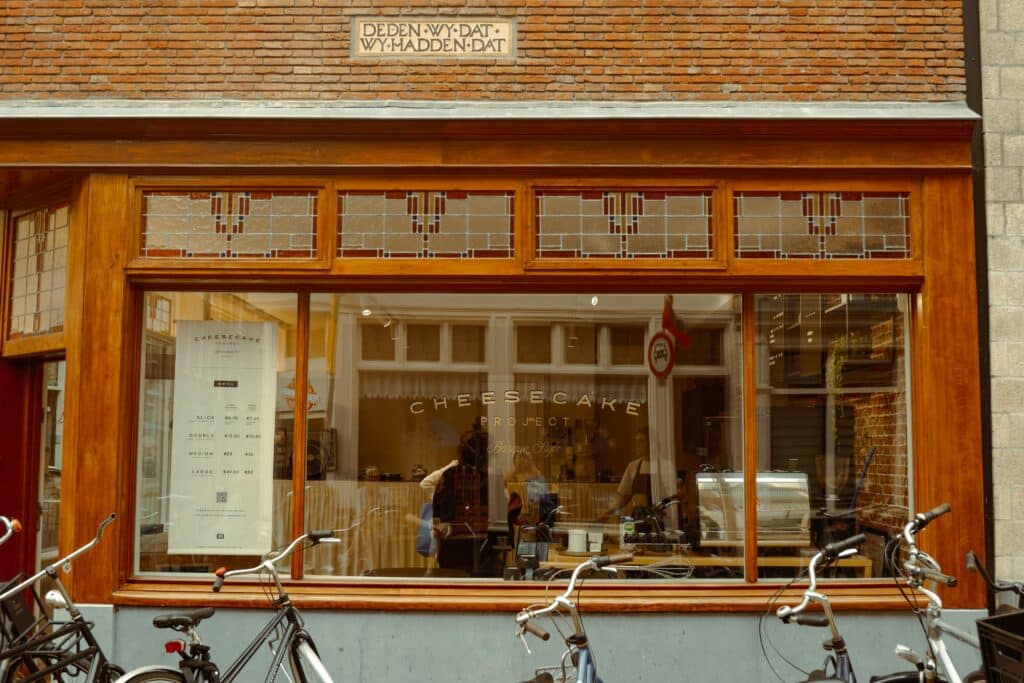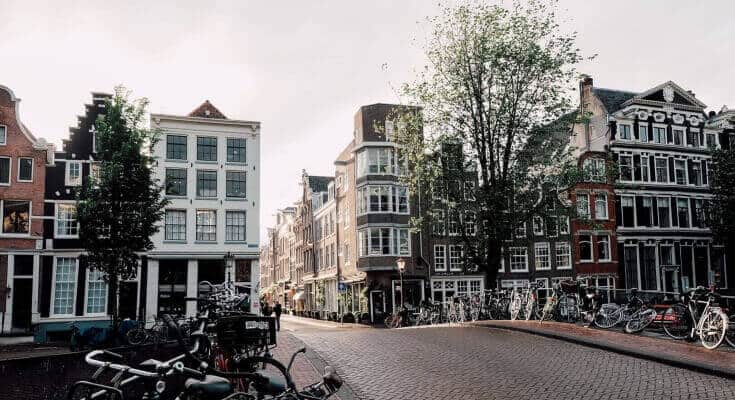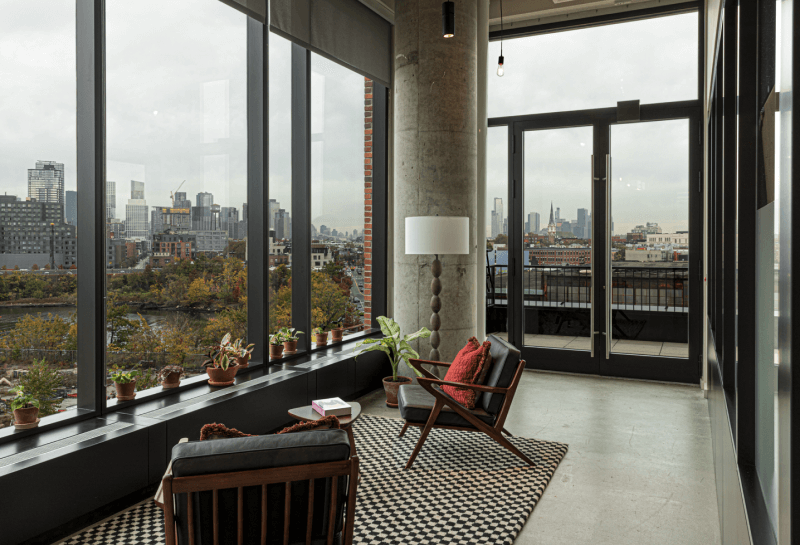The modern workplace has transformed dramatically, and understanding what makes great teamwork in workplaces has become more crucial than ever. Those sterile cubicle farms and isolated workstations that once defined office life are disappearing. Dynamic environments designed to foster teamwork, creativity, and collective problem-solving have taken their place. This shift reflects a fundamental change in how we understand productive work in the 21st century.
This guide explores the diverse landscape of collaborative workspaces, examining different models, essential features, and implementation strategies to help organizations create environments where teams can truly thrive together. Learning how coworking spaces boost productivity and focus becomes essential for businesses seeking to optimize their collaborative potential.
Understanding Collaborative Workspaces

Collaborative workspaces are shared office environments that make it easier for people to work together, be creative, and get things done. They usually have open layouts, meeting rooms, and common areas where folks from different teams, or even different companies, can connect and collaborate. Think coworking spots like Mindspace or innovation hubs that bring people together to share ideas and energy.
These environments typically feature flexible configurations that adjust for different team sizes and activities, reduced physical barriers between team members to encourage natural interaction, technology integration that supports both in-person and remote collaboration, design elements that stimulate creativity and engagement, and cultural reinforcement of collaborative behaviors and practices.
Evolution from Traditional to Collaborative Offices
The journey from traditional to collaborative office design tells a story about how we understand knowledge work. Those cubicle-dominated workplaces of the late 20th century emphasized individual productivity and privacy – great for focus, but often at the expense of teamwork and communication.
Today’s collaborative workspaces represent a more nuanced evolution. They draw lessons from both traditional and open-plan models to create hybrid environments that support different work modes. This evolution has been accelerated by technological advances, changing workforce expectations, and growing evidence about the relationship between physical space and organizational performance.
Types of Collaborative Workspace Solutions

Collaborative workspaces come in many forms, each with distinct characteristics and benefits for different activities and team dynamics.
Open Collaborative Areas
Open collaborative areas are designed without significant physical barriers, allowing team members to easily interact, share ideas, and maintain awareness of surrounding activities. These spaces create the vibe of a bustling coffee shop where creative energy flows freely.
Dedicated Team Collaboration Rooms
Dedicated collaboration rooms provide enclosed spaces specifically designed for team activities requiring sustained focus or privacy. These are the “war rooms” where teams can hunker down for intensive brainstorming or sensitive discussions.
Mixed-Use Collaborative Zones
Mixed-use zones provide flexible spaces that adapt to different collaborative needs throughout the workday. These are the chameleons of the workspace world – transforming their purpose as needed.
Activity-Based Collaborative Spaces
Activity-based collaborative spaces take specialization further, with environments optimized for specific collaborative tasks:
Brainstorming spaces feature abundant writeable surfaces, comfortable informal seating, and playful elements that stimulate creative thinking.
Workshop spaces provide durable work surfaces, accessible tools, and flexibility for hands-on collaboration.
Huddle zones offer intimate settings for quick conversations and problem-solving sessions.
These specialized spaces are particularly valuable for organizations with consistent collaborative activities that benefit from tailored environments.

Essential Features of Effective Collaboration Spaces
Regardless of specific type, successful collaborative workspaces share certain fundamental characteristics that enable productive teamwork.
Technology Integration and Digital Collaboration Tools
Essential technology elements include visual collaboration systems with high-quality displays and simple content sharing, video conferencing capabilities that create equitable experiences for remote participants, wireless connectivity that supports device mobility and guest access, room scheduling systems that improve space utilization and reduce conflicts, and digital collaboration platforms that bridge physical and virtual teamwork.
Furniture and Layout Design Principles
Furniture selection and arrangement significantly impact collaboration quality. It’s not just about looking good – it’s about creating an environment where people naturally want to work together.
Key considerations include comfort for extended interaction, with ergonomic seating that supports different postures; sight lines that maintain visual connection between team members; surface area appropriate to the activity, whether digital collaboration or physical materials; mobility that enables quick reconfiguration for different team sizes and activities; and intuitive arrangements that naturally guide collaborative behavior.
Acoustic and Privacy Management
Managing sound and providing appropriate privacy remains one of the greatest challenges in collaborative environments. Effective approaches include acoustic zoning that separates noisy collaborative activities from quiet work areas, sound-absorbing materials on walls, ceilings, and furniture to reduce reverberation, visual privacy options that allow teams to control exposure when needed, background sound masking that reduces distraction from nearby conversations, and clear protocols for respectful noise levels and interruption management.
Industry-Specific Collaborative Workspace Needs

Different industries have unique collaboration requirements based on their work processes, team structures, and output types.
Creative and Design Industries
Creative professionals benefit from collaborative spaces that support visual thinking, iterative development, and client engagement. These spaces need to inspire as much as they facilitate. The connection between creative work and social ideas becomes particularly important in these environments.
Key elements include gallery-like areas for displaying and reviewing creative work, flexible studio spaces that accommodate various media and creation methods, client presentation zones that showcase work effectively, and informal creative commons areas that inspire cross-pollination of ideas.
Technology and Software Development
Technology teams require collaborative environments that support their unique development methodologies. Think agile, think flexible, think fast-paced.
Essential features include agile team spaces with information radiators (Kanban boards, burndown charts), pair programming stations that enable side-by-side collaboration, testing zones for observing user interactions, and technical review areas with appropriate display technology.
Consulting and Professional Services
Consulting firms benefit from collaborative spaces that support both client relationships and internal teamwork. These environments need to project professionalism while fostering creativity.
Key considerations include client-facing collaboration rooms with professional aesthetics and presentation capabilities, project war rooms where teams can maintain ongoing work visibility, confidential collaboration areas for sensitive client information, and multi-purpose spaces that transition between internal work and client workshops.
Mindspace: Leading Collaborative Workspace Solutions
Mindspace has established itself as a leader in collaborative workspace design, offering thoughtfully crafted environments that balance various work modes and team needs. With locations across major cities worldwide, Mindspace provides flexible workspace solutions that adapt to modern business requirements.

Hybrid Collaborative Solutions
Mindspace’s hybrid approach combines the benefits of private work areas with vibrant collaborative zones. This balanced ecosystem includes:
Dedicated private offices adjacent to shared collaboration areas with glass partitions that maintain visual connection while providing acoustic privacy. Semi-private team spaces that maintain connection to the broader community through open sight lines and accessible common areas. Bookable meeting rooms ranging from intimate 2-person phone booths to large conference rooms accommodating up to 20 people, each equipped with 75-inch 4K displays and wireless presentation technology. Open community spaces featuring designer furniture, natural lighting, and barista-quality coffee stations that encourage cross-company interaction.
Customizable Collaboration Environments
Recognizing that different organizations have unique collaboration needs, Mindspace offers customizable environments that adapt to specific team requirements:
Scalable office solutions from single desks to entire floors, with the flexibility to expand or contract based on team growth. This flexibility ensures that collaboration spaces truly serve their intended purpose rather than forcing teams to adapt to rigid environments.
Community-Driven Collaboration
Beyond physical space design, Mindspace fosters collaboration through intentional community development:
Curated events that bring members together around shared interests, including monthly networking mixers, industry-specific workshops, and wellness programs. Professional networking opportunities that span different companies through the Mindspace member app and dedicated community spaces.
Team Size and Collaborative Workspace Models
Team size significantly influences collaborative workspace requirements, with different solutions appropriate for varying scales of organization.
Small Team Collaboration Solutions
Small teams (typically 2-10 people) benefit from intimate, flexible collaborative environments. Multi-purpose spaces that serve different collaborative needs, featuring movable furniture and retractable partitions. Informal meeting areas integrated with primary work zones, such as lounge seating clusters and standing meeting tables. Shared visual display areas for maintaining project awareness, including wall-mounted monitors and mobile whiteboards. Cost-effective technology solutions scaled to team size, with shared tablets and wireless keyboards.
Medium to Large Team Collaboration Areas
As teams grow (10-50+ members), collaboration spaces need more structure and specialization. Dedicated project rooms for ongoing team initiatives, featuring wall-to-wall whiteboards and multiple display screens. Department collaboration zones that support function-specific activities, with customizable layouts and specialized equipment. Hierarchy of meeting spaces for different group sizes, from 4-person huddle rooms to 30-person all-hands areas. Scheduling systems that manage space utilization through digital calendars and room booking displays.
Cross-Functional and Multi-Team Collaboration
Organizations with complex team structures need collaborative environments that support interaction across boundaries. Neutral territory meeting spaces outside specific team domains, designed with universal appeal and flexible configurations. Large collaborative hubs that accommodate mixed team activities, featuring amphitheater seating and presentation stages. Clear wayfinding and visibility to encourage cross-team awareness through transparent walls and open circulation paths. Shared resources that bring different groups together naturally, such as maker spaces, libraries, and coffee stations.
Implementation and Best Practices

Successfully implementing collaborative workspaces requires thoughtful planning and ongoing management. It’s not just about building something beautiful – it’s about creating something that actually works for your team.
Planning and Assessment Strategies
Before creating new collaborative environments, organizations should analyze existing collaboration patterns and pain points through workplace analytics and time-motion studies. Engage users in the planning process through surveys, interviews, and workshops that capture diverse perspectives. Benchmark against similar organizations and industry best practices through site visits and case study analysis. Consider workspace pilots to test concepts before full implementation, starting with 30-day trial periods.
Change Management and Team Training
New collaborative environments often require behavioral and cultural adaptation. People need time to adjust to new ways of working through clear communication about the purpose and benefits of new spaces through launch events and training sessions. Guidelines for effective use of different collaborative settings, distributed through digital handbooks and posted signage. Training on collaborative technologies and tools, including hands-on workshops and video tutorials. Leadership modeling of collaborative behaviors through executive presence in shared spaces.
Budget Planning and ROI Considerations
Investing in collaborative workspaces requires clear financial planning. Organizations should view collaborative workspace investments through the lens of improved innovation, team effectiveness, and talent attraction/retention, not just real estate efficiency. By thoughtfully considering these diverse aspects of collaborative workspaces, organizations can create environments that truly enable their teams to work together effectively, driving innovation and business success in an increasingly collaborative world.
Ready to transform your workplace into a collaborative powerhouse? Book a tour for your dream office today and discover how Mindspace can help you create the perfect environment for your team’s success.



